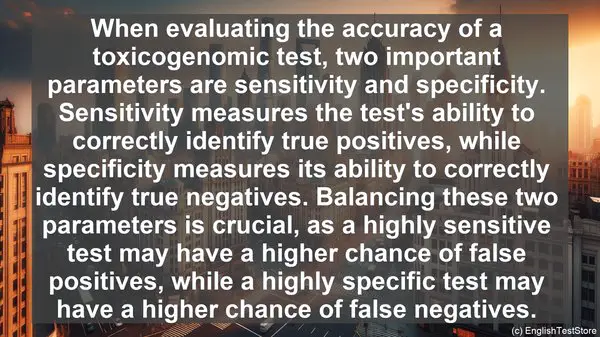Introduction
Welcome to today’s lesson on toxicogenomics. In this lesson, we’ll be focusing on a topic that often causes confusion – words. Specifically, we’ll be discussing the top 10 commonly confused words in toxicogenomics. So, let’s dive right in!
1. Gene vs. Genome
The terms ‘gene’ and ‘genome’ are often used interchangeably, but they have distinct meanings. A gene is a specific sequence of DNA that codes for a particular protein or trait. On the other hand, a genome refers to the entire set of genes in an organism. Understanding this difference is crucial, as it helps us analyze the impact of individual genes within the larger context of the genome.
2. Mutation vs. Polymorphism
Both mutations and polymorphisms involve changes in DNA sequences. However, the key difference lies in their frequency within a population. A mutation is a rare, spontaneous change that occurs in less than 1% of the population. In contrast, a polymorphism is a common genetic variation that is present in more than 1% of the population. This distinction is important when studying the potential health effects of these genetic changes.
3. Expression vs. Regulation
Gene expression refers to the process by which information from a gene is used to create a functional product, such as a protein. Gene regulation, on the other hand, involves the mechanisms that control when and where a gene is expressed. While expression focuses on the ‘what,’ regulation delves into the ‘how’ and ‘when.’ Both aspects are vital in understanding the complex workings of genes.
4. Genotype vs. Phenotype
The terms ‘genotype’ and ‘phenotype’ are fundamental in genetics. Genotype refers to the genetic makeup of an organism, including all the genes it carries. Phenotype, on the other hand, encompasses the observable characteristics of an organism, which are influenced by both genetic and environmental factors. Understanding the relationship between genotype and phenotype is crucial for unraveling the complexities of toxicogenomics.
5. In vitro vs. In vivo
When conducting experiments, researchers often use in vitro or in vivo approaches. In vitro, which means ‘in glass,’ refers to experiments conducted outside a living organism, usually in a laboratory setting. In vivo, meaning ‘within the living,’ involves experiments conducted within a living organism. Both approaches have their advantages and limitations, and choosing the right one is essential for accurate toxicogenomic studies.
6. Dose vs. Response
In toxicogenomics, understanding the relationship between dose and response is crucial. Dose refers to the amount of a substance administered, while response refers to the biological effect it produces. The dose-response relationship helps us determine the toxicity of a substance and establish safe exposure levels. By studying this relationship, we can gain insights into the potential health risks associated with various compounds.
7. Sensitivity vs. Specificity
When evaluating the accuracy of a toxicogenomic test, two important parameters are sensitivity and specificity. Sensitivity measures the test’s ability to correctly identify true positives, while specificity measures its ability to correctly identify true negatives. Balancing these two parameters is crucial, as a highly sensitive test may have a higher chance of false positives, while a highly specific test may have a higher chance of false negatives.
8. Biomarker vs. Endpoint
Biomarkers and endpoints are both used to assess the effects of toxic exposures. A biomarker is a measurable indicator of a biological process, while an endpoint is a specific outcome used to evaluate the overall effect. Biomarkers can be early indicators of toxicity, while endpoints provide a more comprehensive assessment. Integrating both biomarkers and endpoints in toxicogenomic studies enhances our understanding of the mechanisms and outcomes of toxic exposures.

9. Risk vs. Hazard
In toxicogenomics, risk and hazard are distinct concepts. Risk refers to the probability of harm occurring under specific conditions of exposure. Hazard, on the other hand, refers to the inherent potential of a substance to cause harm. Understanding the difference is crucial, as it helps us assess the potential dangers associated with various toxicants and develop appropriate risk management strategies.

10. Replication vs. Reproducibility
In scientific research, replication and reproducibility are essential. Replication involves conducting the same experiment again, following the same protocol, to validate the initial findings. Reproducibility, on the other hand, refers to the ability to obtain similar results when the experiment is conducted by different researchers, using different protocols. Both replication and reproducibility are vital for ensuring the reliability and credibility of scientific studies.
